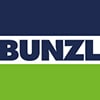When shipping pharmaceutical products or any type of hazardous materials, it is crucial to show the right labels on the outer packaging. These make others aware of the contents within and any additional care or steps that need to be taken when handling.
All packages that contain dangerous goods (see list below) should show a Hazardous Goods warning label; this is the shape of a diamond and as such they are also known as ‘Warning Diamonds’. They should be used during the transportation of hazardous goods for all methods of shipment, including by air, sea, rail or road.
The different classes of material that must display a Hazardous Goods label are as follows:
Transporters of goods that may be dangerous to the environment if they become loose also need to display a separate ‘Dangerous/hazardous to the Environment’ label. These are the same diamond shape as the hazardous materials labels. This label became mandatory on 1st January 2010.
Examples of these would be gasoline, fireworks, cleaning agents, certain types of paint and pesticides, although the full list is much longer.
In addition to these, certain shipments must display a Limited Quantity Label (a.k.a an LQ Mark). This is another diamond shaped label which is applied to packages to show that the goods or substances are dangerous goods that are packaged in accordance with the Limited Quantity (LQ) exemption. This refers to smaller items that are packed in boxes or secured to shrink-wrapped trays, and thus have a higher level of safety based on the additional packaging they are contained within as well as the outer shipping packaging.
A Dangerous Goods Note is a document that details the contents of a shipment to the carriers, forwarders and those receiving the delivery. They are used alongside Hazardous Goods labels when they are in all types of transport (apart from air). Instead of a Dangerous Goods Note, an IATA Goods Declaration is normally used to ship hazardous goods.
Tamper labels and non-tearable tags are very important, especially in the pharmaceutical industry. Tamper labels are placed onto the outer packaging and will clearly show signs of damage if the shipment opened without authorisation. Individual packets inside the shipment will also have these in place.
Non-tearable tags can be used as an alternative or as a secondary measure of protection. They are most often used on the outer packaging, are weatherproof and extremely tough, ensuring people cannot easily or quickly open the packaging until it has been delivered.
A Unique Formula Identifier (UFI) will be required by law on the labels of goods classified as physical or health hazards. This requirement was introduced by Annex VIII to the CLP Regulation, packaging and labelling of chemical mixtures and substances to the Globally Harmonised System (GHS) and came into force this year.
The UFI is an alphanumeric code that consists of 16 digits and letters divided into 4 sections by hyphens. This marking has to be legible and clearly visible on the label with the acronym UFI in prefixed capitals.
Manufacturers, importers and distributors of specific substances must communicate these hazards to any other components in the supply chain, including consumers. This is done by labelling when the mixture or substance is in accordance with the Classification Labelling and Packaging Regulation (CLP).
Those who are transporting Hazardous Goods by road must have the following:
Those who are transporting Hazardous Goods by air must have the following:
Subscribe to the newsletter!
Be the first to know!

a member of the Bunzl group of companies
Design & development